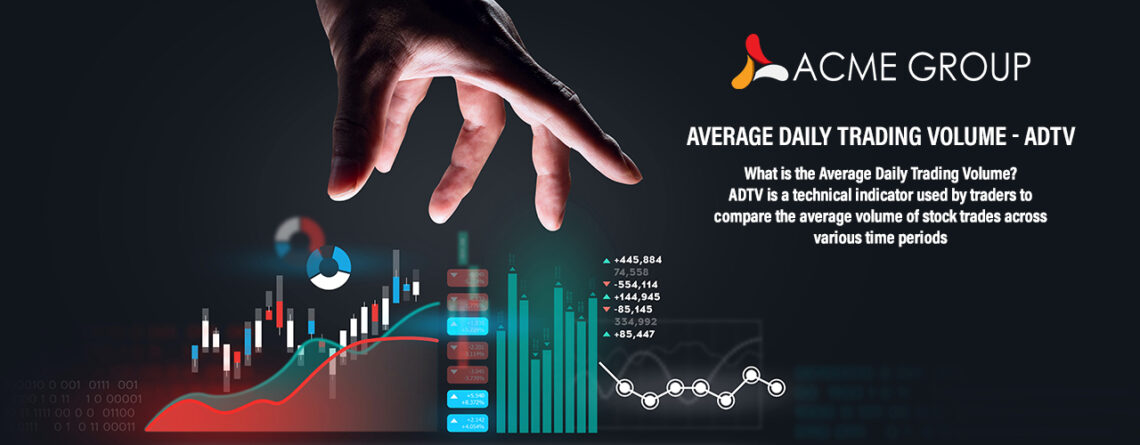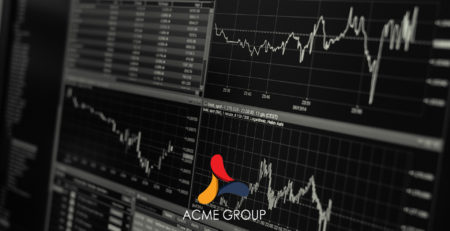What is the Average Daily Trading Volume? ADTV is a technical indicator used by traders to compare the average volume of stock trades across various time periods.
Average Daily Trading Volume – ADTV
What is the average daily trading volume? How do you calculate it? What does ADTV mean? These are some common questions that newbie traders and enthusiasts ask and search the internet for.
Average daily trading volume, or ADTV for short, is a metric derived from the average number of shares traded per day during a specified time frame. It refers to the total US dollar value of stocks bought and sold on one side of a stock exchange in one day. A higher ADTV means that there are more trades happening each day on an individual market. This helps ensure liquidity and stability within the market.
Simply put, ADTV is a calculated statistic that indicates the average number of shares traded in one day. It’s determined by dividing total trade volume for an entire year by 365 days. This gives traders, analysts, and investors insight into stocks with high turnover rates. The higher this value, the more active a stock will be. What does that mean? It means that if you are looking to invest in securities, then stocks with high ADTV volume should be your first choice as they will generate greater returns.
This blog post will explore what average daily trading volume (ADTV) is and how it affects the stock market.
What Is Average Daily Trading Volume (ADTV)?
ADTV, or average daily trading volume, is a technical indicator used by traders to compare the average volume of stock trades across various time periods. You can determine the average daily trading volume (ADTV) for a stock, index, or mutual fund by dividing its total value traded over one year by 365 days.
Average Daily Trading Volume is the number of shares that are exchanged on an exchange on any given day. A higher Average Daily Trading Volume means there is more liquidity and typically less volatility within the market, which makes it easier to get into and out of trades without having too much impact on price movements. The stocks with high average daily trading volumes will be very liquid, so they would be ideal if you wanted to enter/exit at specific prices, but this should not be your only criteria when making investment decisions as other factors such as valuation also need to be considered before investing in a stock.
This is an average of the trading volume for one trading day over a specific time period, normally 200 days or more, to smooth out volatility and account for less-frequent trading days such as weekends. Volume is calculated by multiplying the number of shares traded by the price per share. A higher ADTV means that there are more trades happening each day on an individual market which helps ensure liquidity and stability within the market.
In short: Average daily trade volume (ADTV) refers to how many dollars worth of stocks have been bought and sold on exchanges every single day over a specified time frame – usually a year-long but sometimes shorter depending upon what’s being measured – divided by 365 days = average value traded/day x how many days in the year.
What Does Average Daily Trading Volume (ADTV) Tell You?
The average daily trading volume ADTV signifies how active the stock is in terms of trading. Essentially, it indicates several aspects of stock trading, the most common ones being:
- It tells you the overall level of interest in a particular stock: for example, if a stock has an average daily trading volume of $50,000, then it tells you that investors are not very interested in this particular stock.
- It also helps to understand the liquidity position of a company: For instance, if a company’s average daily trading volume is high, then its liquidity will be good too. In the case of other securities involving derivatives and options etc., ADTV reflects their overall activity on exchanges which can help give insights into how liquid they might be.
- It helps you determine the price levels that represent resistance or support for a particular stock: if the average daily trading volume is high, then it suggests that more traders are likely to enter or exit at these levels. This, in turn, means that they’re important price reference points for any trader who wants to buy/sell at those prices.
- It helps you understand how volatile a stock is: If Average Daily Trading Volume increases significantly overnight without any news announcement triggering the change, there’s usually an element of panic selling involved, which can lead to sudden downward movement in share prices and vice versa if ADTV decreases quickly with no apparent reason.
The higher this value, the greater number of shares traded each day on an individual market which provides better liquidity and stability within the industry while keeping transaction costs low for investors. Higher ADTV also ensures less volatility, making it easier to get into and out of trades without having too much impact on price movements. The stocks with high average daily trading volumes will be very liquid, so they would be ideal if you wanted to enter/exit at specific prices, but this should not be your only criteria when making investment decisions as other factors such as valuation also need to be considered before investing in a stock.
ADTV Example
Let’s say that an investor wants to buy shares of ABC Inc., and they want to purchase $50,000 worth of stock per day at most. If the average daily trading volume is only $30,000 for this particular company, then it means investors are less interested in buying or selling ABC Inc., making it harder to find buyers/sellers. This increases execution risks attached with any trade orders placed by our investors. On the other hand, if there was an average daily trading volume of more than $200,000 (this can be anything) for ABC Inc.’s stocks, then there would be no issues whatsoever when placing trades since liquidity is higher, so you’d probably get your order filled quickly without having too much impact on price movements.
Why Is Volume Trading Important to Investors?
Volume trading is vital to investors because it gives them a sense of how many investors are trading in the market and what direction they’re taking. For example, when traders see significant changes in volume levels during certain periods such as pre-earnings, post-earnings, or even after major announcements, then it tells you that there’s more volatility ahead.
Final Thoughts
Average Daily Trading Volume or ADTV is an important factor to consider when investing in stocks because it helps you understand the overall level of interest in a particular stock, the liquidity position of a company, and how volatile it might be.












Leave a Reply